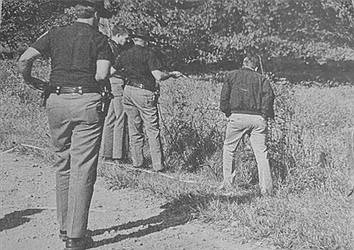Watch for these two birds your backyards
January 11, 2023 at 6:42 p.m.

Bird watching, or "birding", has always been a popular and interesting hobby. During the Covid lockdowns, Indiana saw an increase in the number of birders who began to watch from their windows, yards, and local nature trails. If you're interested in picking up the pastime, or have feeders in your yard, here are some fun facts about two more of Indiana's frequent flyers.
TUFTED TITMOUSE: These little birds are very common at feeders and in backyards. The Tufted Titmouse has a small mohawk that helps them stand out from the crowd. Titmice are a silvery-gray color, with a black patch just above their beaks, and sometimes an orange patch under the wing. Their large black eyes are a trademark feature. Titmice love seed mixes, especially black sunflower seeds, and often eat snow if they run out of drinking water. They are one of the few birds who will hold seeds in their feet and crack them open with their beak. Tufted Titmice do not excavate their own living quarters, but rather use natural holes in trees and abandoned cavities made by woodpeckers. They will also use artificial nesting boxes set up in your back yard.
BLUE JAY: This beautiful and chatty bird is a regular at backyard feeders. We recognize them instantly, but did you know—Blue jays aren't actually blue! Their feathers are a brownish-gray color due to a pigment called melanin, but the light hits their feathers and scatters into what we see as blue. They are world class mimics, meaning they can copy other birds' calls to throw off predators or warn others in their own group. They often do an incredibly accurate Hawk cry and will clear a feeder area of other birds who are frightened away by the sound. Some more cool facts about these birds: Many blue jays are monogamous, and stay with their mates throughout their lives. The pairs will build homes together during mating season. The black bridle-shaped rings around their neck vary on each individual, and possibly help them tell each other apart. The oldest recorded Blue Jay was reportedly 26 years and 11 months at the time of its death!
Latest News
E-Editions
Events
Bird watching, or "birding", has always been a popular and interesting hobby. During the Covid lockdowns, Indiana saw an increase in the number of birders who began to watch from their windows, yards, and local nature trails. If you're interested in picking up the pastime, or have feeders in your yard, here are some fun facts about two more of Indiana's frequent flyers.
TUFTED TITMOUSE: These little birds are very common at feeders and in backyards. The Tufted Titmouse has a small mohawk that helps them stand out from the crowd. Titmice are a silvery-gray color, with a black patch just above their beaks, and sometimes an orange patch under the wing. Their large black eyes are a trademark feature. Titmice love seed mixes, especially black sunflower seeds, and often eat snow if they run out of drinking water. They are one of the few birds who will hold seeds in their feet and crack them open with their beak. Tufted Titmice do not excavate their own living quarters, but rather use natural holes in trees and abandoned cavities made by woodpeckers. They will also use artificial nesting boxes set up in your back yard.
BLUE JAY: This beautiful and chatty bird is a regular at backyard feeders. We recognize them instantly, but did you know—Blue jays aren't actually blue! Their feathers are a brownish-gray color due to a pigment called melanin, but the light hits their feathers and scatters into what we see as blue. They are world class mimics, meaning they can copy other birds' calls to throw off predators or warn others in their own group. They often do an incredibly accurate Hawk cry and will clear a feeder area of other birds who are frightened away by the sound. Some more cool facts about these birds: Many blue jays are monogamous, and stay with their mates throughout their lives. The pairs will build homes together during mating season. The black bridle-shaped rings around their neck vary on each individual, and possibly help them tell each other apart. The oldest recorded Blue Jay was reportedly 26 years and 11 months at the time of its death!





